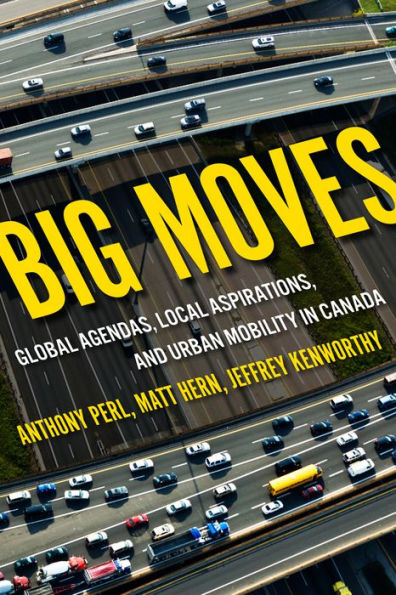Big Moves: Global Agendas, Local Aspirations, and Urban Mobility in Canada
All countries have distinctive urban regions, but Canadian cities especially differ from one another in culture, structure, and history. Anthony Perl, Matt Hern, and Jeffrey Kenworthy reveal that despite the peculiarities and singular traits that each city embodies, a common logic has guided the development of transportation infrastructure across the country. Big Moves analyzes how Canada's three largest urban regions - Montreal, Toronto, and Vancouver - have been shaped by the interplay of globalized imperatives, aspirations, activism, investment, and local development initiatives, both historically and in a contemporary context. Canadian urban development follows a distinct pattern that involves compromise between local viewpoints and values and the pursuit of global capital at particular historical junctures. As the authors show, the success or failure of each city to construct major mobility infrastructure has always depended on the timing of investments and the specific ways that cities have gained access to necessary capital. Drawing on urban mobility history and global city theory, this book delves into the details of the big moves that have affected transport infrastructure in major Canadian cities. Knowing where urban development will head in the twenty-first century requires understanding how cities' major mobility infrastructures were built. Big Moves explains the shape of Canada's three biggest cities and how their mix of expressways and rapid transit emerged.
"1134504297"
Big Moves: Global Agendas, Local Aspirations, and Urban Mobility in Canada
All countries have distinctive urban regions, but Canadian cities especially differ from one another in culture, structure, and history. Anthony Perl, Matt Hern, and Jeffrey Kenworthy reveal that despite the peculiarities and singular traits that each city embodies, a common logic has guided the development of transportation infrastructure across the country. Big Moves analyzes how Canada's three largest urban regions - Montreal, Toronto, and Vancouver - have been shaped by the interplay of globalized imperatives, aspirations, activism, investment, and local development initiatives, both historically and in a contemporary context. Canadian urban development follows a distinct pattern that involves compromise between local viewpoints and values and the pursuit of global capital at particular historical junctures. As the authors show, the success or failure of each city to construct major mobility infrastructure has always depended on the timing of investments and the specific ways that cities have gained access to necessary capital. Drawing on urban mobility history and global city theory, this book delves into the details of the big moves that have affected transport infrastructure in major Canadian cities. Knowing where urban development will head in the twenty-first century requires understanding how cities' major mobility infrastructures were built. Big Moves explains the shape of Canada's three biggest cities and how their mix of expressways and rapid transit emerged.
140.0
In Stock
5
1

Big Moves: Global Agendas, Local Aspirations, and Urban Mobility in Canada
344
Big Moves: Global Agendas, Local Aspirations, and Urban Mobility in Canada
344
140.0
In Stock

Product Details
| ISBN-13: | 9780228001607 |
|---|---|
| Publisher: | McGill-Queens University Press |
| Publication date: | 09/23/2020 |
| Series: | McGill-Queen's Studies in Urban Governance , #13 |
| Pages: | 344 |
| Product dimensions: | 6.00(w) x 9.00(h) x 1.00(d) |
About the Author
From the B&N Reads Blog
